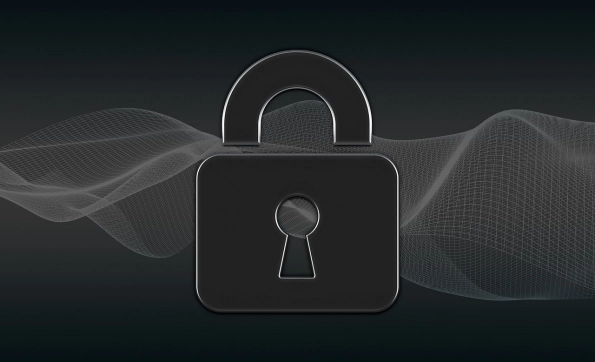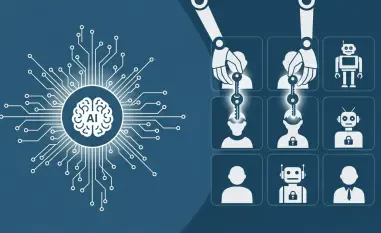In an ever-evolving landscape, the technology and cybersecurity sectors continue to introduce groundbreaking innovations and tackle emerging threats. This week marks significant product launches, insightful reports on human risks, advances in AI, and compelling legal victories, all pivotal to reshaping the future of tech security. The various developments not only highlight the rapid advancements but also stress the importance of integrating new knowledge and technologies to effectively manage and counter these emerging challenges.
New Insights from Key Reports
A fresh perspective on human risk management comes from CultureAI’s “State of Human Risk Management 2024 Report.” This document, based on a survey of 200 UK-based SOC and cybersecurity teams, highlights the need for organizations to adjust their cybersecurity protocols to address evolving human-centric threats. The report suggests that while technology plays a crucial role, a dynamic and adaptive approach to human behaviors and risks is equally essential for robust cyber defense. As companies invest more in technological solutions, there is a concurrent need to educate and fortify their workforce against common pitfalls associated with human error or malicious insiders.
CultureAI’s findings point to a growing recognition that human factors cannot be overlooked in cybersecurity strategies. The fallout from human error necessitates comprehensive strategies that go beyond traditional security measures. This report underscores the significance of understanding human risk in cybersecurity, suggesting that technology alone cannot fully defend against these threats. Additionally, it encourages a balanced approach that includes continuous training and awareness programs aimed at reducing human risks.
Moreover, the Clutch Non-Human Identities (NHI) Index underscores the importance of managing the burgeoning number of non-human entities in tech environments. This index draws attention to the startling statistic that non-human identities now outnumber human ones by a ratio of 45:1. This presents a unique challenge for IT security teams who must navigate this new complexity with diligence and foresight, as the growing number of non-human identities can create unexpected vulnerabilities. Effective management of these identities is critical for maintaining the security integrity of modern IT environments.
Innovative Product Announcements
Qualys’ recent launch of its cloud-based Risk Operations Center (ROC) integrated with Enterprise TruRisk Management (ETM) marks a significant stride in addressing security risk data silos. This new platform aims to unify security risk data from myriad sources, thereby offering a holistic view and enabling more effective risk management across diverse environments. The ROC platform exemplifies the industry’s shift towards integrated solutions that enhance security operations and data centralization. By offering a consolidated view of security data, organizations can better anticipate, identify, and mitigate risks.
Pulseway joins the parade of innovations with its release of version 9.9 of its RMM solution, which now includes a general Mobile Device Management (MDM) solution for iOS, iPadOS, and macOS devices. Additionally, the platform scalability has been improved dramatically, with the default notification log capacity expanded from 500 to 100,000 entries. These enhancements show Pulseway’s commitment to providing scalable and versatile solutions that meet modern enterprise needs. The upgrades are a testament to Pulseway’s ongoing effort to adapt to the evolving demands of IT management through continuous improvement.
These product announcements reflect a broader trend of consolidation and integration in the cybersecurity field. By bringing various tools and data sets together within unified platforms, these solutions aim to streamline operations and enhance overall efficacy in managing complex security landscapes. This move towards integrated, all-encompassing platforms is seen as a pivotal evolution in managing the increasingly sophisticated threat environments faced by modern organizations.
The Transformative Role of AI
AI continues to revolutionize security, as highlighted by Axis Communications during a discussion at Open Axis Malmo. Mats Thulin emphasized the transformative impact AI is having on physical security systems. AI-assisted cameras and surveillance tools are not only enhancing operational efficiency but also providing more accurate threat detection capabilities. The role of AI in physical security illustrates how advanced technologies can minimize human error, reduce resource expenditure, and identify potential threats more effectively than traditional methods.
The integration of AI in security extends beyond physical surveillance, encompassing advanced threat detection and response systems in cybersecurity as well. As organizations increasingly rely on AI to bolster their defenses, the technology’s role in providing real-time, data-driven insights becomes indispensable. The implementation of AI in security measures showcases its potential to exponentially enhance both predictive and reactive capabilities. From reducing false positives in threat detection to enabling automated incident responses, AI’s role in evolving security paradigms cannot be overstated.
Businesses leveraging AI in their cybersecurity infrastructure can not only enhance their threat detection abilities but also allocate resources more efficiently. This allows security teams to focus on high-priority threats, knowing that AI systems are handling the bulk of routine monitoring and initial threat assessment. Therefore, AI’s integration into cybersecurity reflects a significant shift towards more automated, intelligent security systems, capable of adapting to and anticipating threats with unprecedented accuracy.
Significant Developments in Cybersecurity
BlueVoyant’s notable achievements were highlighted in a Forrester Consulting Total Economic Impact (TEI) study, which reported a 210% ROI and a net present value (NPV) of $3.9 million over three years for organizations utilizing its Managed Detection and Response (MDR) services. This study illustrates the tangible financial benefits and enhanced security posture companies can achieve through managed services. The impressive ROI figure underscores the effectiveness of BlueVoyant’s MDR services in providing comprehensive, cost-effective security solutions that maximize the value of existing security investments.
Additionally, ManageEngine’s recent recognitions from both Gartner and KuppingerCole underscore the firm’s strategic focus on identity-centric security solutions. Their achievements in advanced PAM, IGA, identity threat detection and response, and identity security posture management reflect an industry-wide acknowledgment of comprehensive and integrated security approaches. These accolades highlight ManageEngine’s commitment to developing robust security tools that address the complex identity management challenges faced by modern organizations.
Such recognitions and studies highlight the evolving nature of cybersecurity, where the effectiveness of solutions is increasingly measured not just by technological prowess but also by their economic impact and overall ROI. Recognitions from prestigious analyst firms not only validate the efficacy of these solutions but also influence market perceptions and adoption rates. As a result, companies like BlueVoyant and ManageEngine are well-positioned to lead the way in defining the future standards of cybersecurity solutions, ensuring they deliver both enhanced security and substantial economic benefits.
Empowering Diversity in Cybersecurity
The National Cyber Security Centre (NCSC) continues its efforts to diversify and empower the cybersecurity workforce. A team of CyberFirst Bursary alumni will represent the UK at the Kunoichi Cyber Games during the Code Blue cybersecurity conference in Tokyo. This participation exemplifies the growing involvement of women in cybersecurity, supported by initiatives aimed at career advancement and industry inclusion. The CyberFirst Bursary scheme demonstrates the importance of nurturing talent from underrepresented groups, thereby fostering a more inclusive and robust cybersecurity community.
Such efforts ensure a diversity of perspectives and encourage innovative approaches to tackling security challenges. The involvement of these young women highlights the ongoing shift towards a more balanced and equitable cybersecurity workforce. By promoting diversity, the industry not only addresses the talent gap but also brings varied viewpoints that can drive creative solutions to complex problems. This movement towards greater inclusion indicates a positive transformation within the sector, aiming to create a more dynamic and resilient cyber defense community.
Additionally, by showcasing the capabilities of women in cybersecurity through international platforms like the Kunoichi Cyber Games, the NCSC is setting a precedent for the global industry. These representations help in breaking stereotypes and encouraging more women to consider careers in cybersecurity. Empowering a diverse workforce is integral to addressing the multifaceted nature of modern cybersecurity challenges, ensuring that solutions are both comprehensive and representative of a global landscape.
By consolidating the diverse updates from this week, the article captures a broad spectrum of advancements while highlighting the key trends shaping the technology and cybersecurity landscape. The detailed analysis provides a structured understanding of these multifaceted developments, reflecting the strategic imperatives in these rapidly evolving domains.













